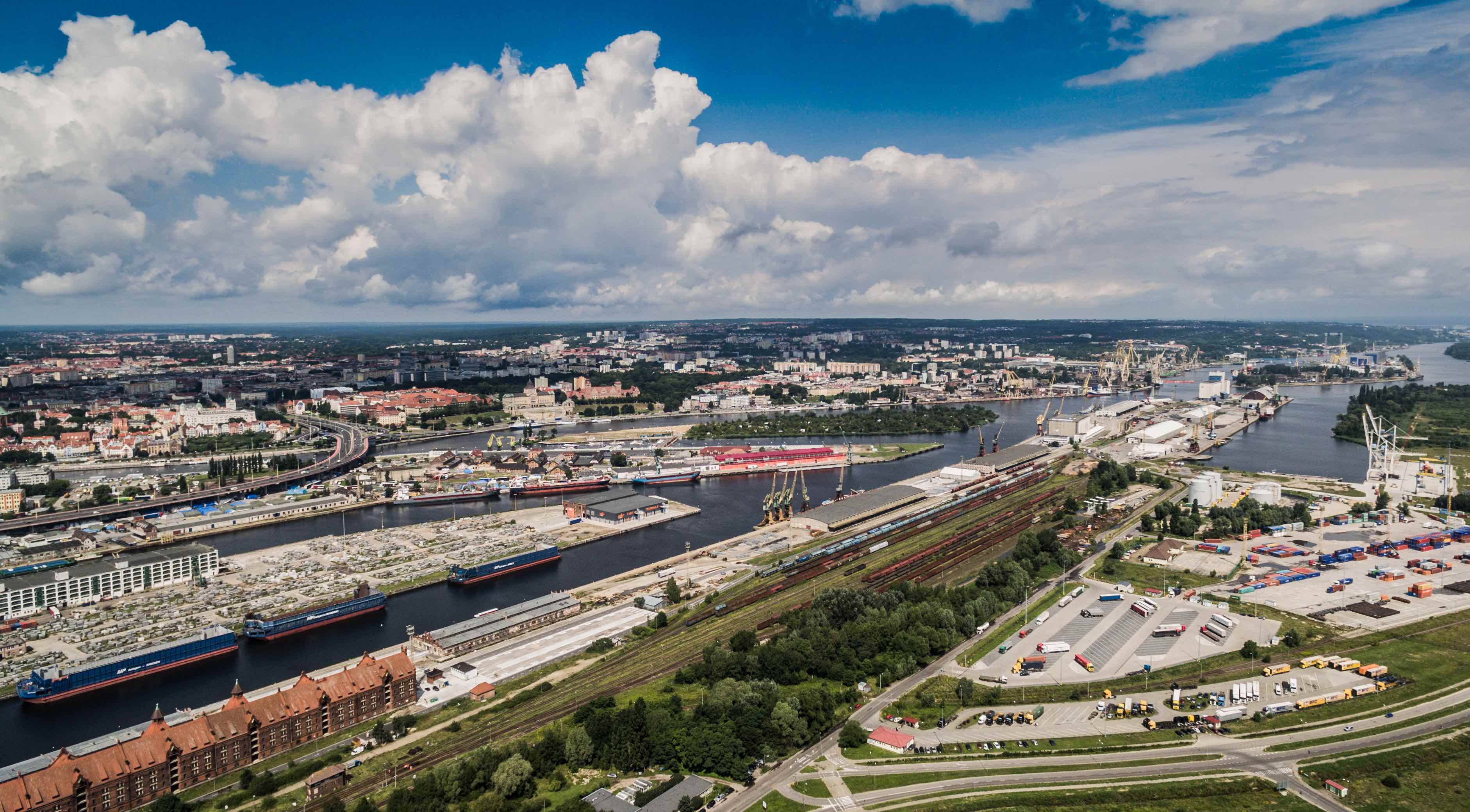
On 28th January this year, during a dedicated press conference, the Szczecin and Świnoujście Seaports Authority announced its operation figures for cargo handling, investment and maintenance of port infrastructure in 2019.
In 2019, the Szczecin-Świnoujście seaports handled 32,174.8 thou. tons of cargo. In the record year of 2018, the ports handled only 3.3 percent more cargo, precisely 33,257.4 thou. tons.
The main double-digit growth cargo groups included grain (+19 %) and fuel (+11 %), including LNG (+22 %). The increase in grain can be chiefly attributed to the larger export of wheat and rapeseed meal, stimulated by the growing global demand. In the case of LNG, in 2019, the port handled 2,406.8 thou. tons (30 gas carriers: 17 from Qatar, 10 from USA and 3 from Norway). For comparison, in 2018, the port handled 1,977.4 thou. tons (23 gas carriers: 18 from Qatar, 4 from Norway and 1 from USA).
In 2019, negative growth was recorded in coal (-9 %), ore (-29.6 %), other bulk (-0.7 %), general cargo (-3.1 %) and containers (-6.5 %). Last year, the worsening of the crisis in steel manufacturing in Europe was the result of the influx of large volumes of cheap steel from China and Russia, due to the lack of prohibitive tariffs, which led to a significant reduction in the production of steel by steel mills in Poland and in the immediate hinterland of the two ports, in particular in the Czech Republic and Slovakia. This translated directly into handling figures for this particular cargo, as well as transhipment of coal. In this case, it is worth mentioning that 56 % of imported coal comes from Australia, USA, Canada, Colombia, and Mozambique, and the remaining 44 % from Russia.
The decrease in general cargo is attributable to smaller volumes of steel and aluminium products handled, as well as nearly halved handling of paper and pulp, and reduced volumes of general cargo transported by ferries. At the same time, handling of bagged fertilizers and granite increased.
From the beginning of 2019, ports of Szczecin and Świnoujście, as well as Gdańsk and Gdynia, have been applying new rules, identical to those in western ports, regarding the calculation of the net weight of a truck (tare weight including tractor and trailer). This is important in the case of general cargo transported by ferries. Until the end of 2018, the tare weight was calculated according to the 1980s formula and it was 6 tons. Today, an average truck, i.e. a tractor and a trailer combined, is 14.5 to 18 tons. Therefore, an average weight of 15 tons has been adopted. The calculation of the tare weight is necessary to determine the amount the operator charges for the transport by ferry, i.e. weight of truck and its load combined rather than weight of cargo only (It is necessary to calculate total weight to be transported, which cannot exceed ship’s permitted capacity). For analytical reasons, figures of 2018 have been recalculated according to the new tare weight.
Almost a half of all cargo handled in 2019 was general cargo which accounted for 54.4 % of the total, the remaining 45.6 % was other dry and liquid bulk. Last year, the ports handled 8872 ships, which is 514 more than in 2018 (8358 ships).
As regards the hinterland structure, a clear majority of cargo, that is 62 %, was delivered to and transported out of the port by road, whereas rail accounted for 28 %. The remaining 8.5 % was pipeline transport and 1.4 % inland shipping.
Considering the slow down on global markets, the figures of 2019, which are almost identical to the record year of 2018, indicate a stable level of cargo handling in the ports of Szczecin and Świnoujście. This is attributed to the universal nature of the two ports, where decline in one cargo group is compensated by an increase in another. The management of the Ports expects that 2020 should be similar to 2019, with decline in ore and coal to continue at a similar level. We should remember however, that the market situation can be volatile and certain factors remain beyond the control of the Ports Authority and handling companies, and those factors might have their impact on the volume of cargo.
It is worth adding that both the Port Authority and port companies have been busy attracting new cargo to the ports. Some activities include investment in port infrastructure. The Szczecin and Świnoujście Ports Authority Investment Plan designates PLN 1.5 bn for infrastructure improvements in Szczecin and Świnoujście. The Ports Authority has been refurbishing quays in Szczecin close to the Dębicki Canal and Kaszubski Basin. Their parameters will be brought in line with the new depth of the Świnoujście-Szczecin channel after dredging to 12.5 m. Both ports plan to expand and modernize their port infrastructure. In Świnoujście, a ferry terminal is currently modernised to handle intermodal transport and a new car park is built for trucks. Undoubtedly, the cargo handling capacity of the ports will increase with the building of a deep water container terminal in Świnoujście and the extension of the LNG terminal.
Moreover, other parties also invest in access infrastructure leading to the ports, e.g. dredging and improvement of the Świnoujście-Szczecin fairway to the depth of 12.5 m, modernization of S3 expressway, modernization of rail lines and restoring navigability of the Oder Waterway.
All these projects should enhance the competitiveness of the ports of Szczecin and Świnoujście. The expected effect will include year-to-year growth in the volume of cargo handled.
The business growth of the Ports is accompanied by their social responsibility. In 2019, the Ports Authority supported over one hundred organizations, including associations and sport clubs, in various areas of their activity, e.g. sport for children and youth, integration of senior citizens, mass events (Sea Days Festival in Szczecin, Sail Świnoujscie, Jakubowy Fair), as well as cultural events etc.


